zone defense
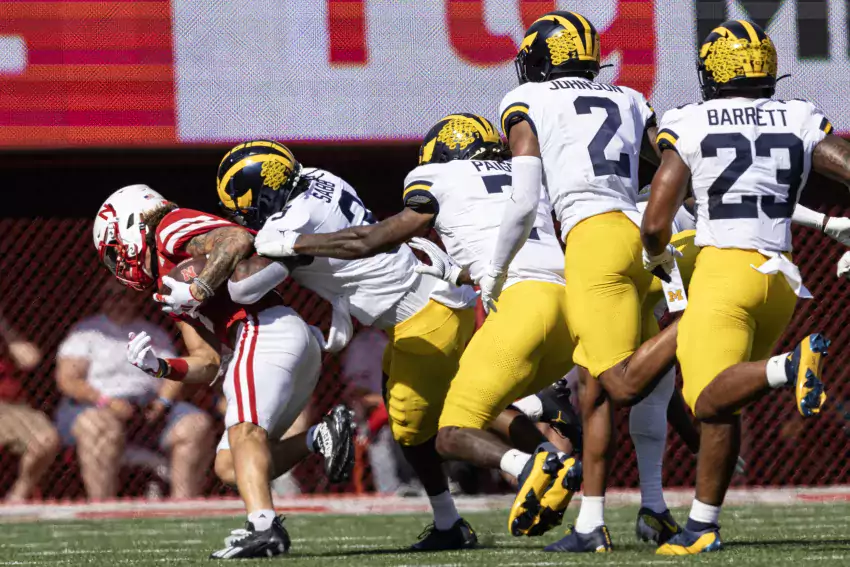
The one takeaway from the Nebraska game that isn't crushing dominance was Michigan's zone defense on in-breaking routes (slants/digs) needed a lot of cleanup. What went wrong wasn't hard to figure out, but there's some understandable confusion I think about how, or in some cases whether, it was supposed to go right.
ZONE REFRESHER
Cover 3 at its core has three deep zones, two Curl/Flat zones, and then you can vary how many players you want to drop into Hole zones.
Drawing circles is a bad way to represent zones, however, because it makes it seem like defenders are tasked with sitting in the middle of their circles and projecting strength over their fiefdoms. We call that "covering grass." You do that, you end up like Stephen of Blois with rebellions springing up everywhere around you. You have to play zone defense with the constant movement of a Henry Plantagenet: anticipating trouble, heading it off, harrying it out of your kingdom, then snapping quickly to stop the next threat before it gets out of hand.
The route you take to your zone is important too, because you can't give receivers the run of the roads. Note how the paths of the SS and Nickel will have them above the Y and the H respectively, while the CBs would be escorting the outside receivers to deep 1/3 zones. Those defenders are heading elsewhere, but for the duration of a quick seam they're right in the way.
That takes care of the seams and fly routes, but there are a few known vulnerabilities where offenses know you can squeeze a ball between the zones.
[After THE JUMP: Feeling attacked]
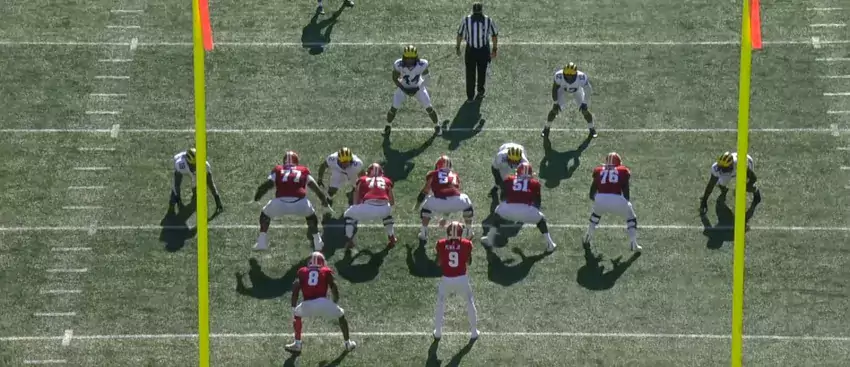
If you follow enough baseball you're familiar with the concept of a pitcher's second career. The story's always more complex but in broad strokes the kid who comes out dominating with a 101-mph fastball, and the things having a nuclear fastball lets you get away with, slowly builds up his repertoire as the heat begins to dissipate.
This doesn't even show it but Verlander's fastball rate dropped under 50% in 2020
Michigan's defense under Don Brown used to be that dominant fastball-changeup kid. As offenses adapted he was working in more offspeed stuff that play off the fastball, but didn't change the overall approach. That's not insane. If you're going to use your changeup as your primary pitch, you'd better be Luis Castillo. Or Iowa.
This year however they reached that inflection point. It's a dramatic one not only because Lavert Hill was replaced by a downgrade in Gemon Green, but their blazing heater Ambry Thomas opted out and the rest of the depth chart is so weak a shitty MSU rookie can knock them all over the yard. It looks so disorganized because everyone else is trying to make up for it. The DL is jumping the snap to add pressure. They're running more 3-3-5 and stunts for the same reason.
They're doubly unfortunate because downfield chucks are an underused play in the Big Ten. They're relatively low-risk, the ball gets out too quickly for your pass protection to matter, receivers have more game practice on them because they all caught a lot of fades in high school, and cornerbacks are disadvantaged even when they win the route because OPI is rarely called, and if they get run over by the receiver it's usually a flag. However lizard-brained coaches often think in terms of binary success rates, and eschew "low-percentage" plays with high upside. How many times have you heard a coach essentially apologizing for throwing downfield "just to keep them honest"? Show most coaches, especially underdogs, a flashing "Throw at Me!" sign, however, and they'll start doing the thing they should have been doing more of all along. We're making them more efficient than they want to be!
Mesh
When talking in overall defensive structure there's too much to discuss, so let's pare it down to one play that's in almost every offense, and was a big part of Indiana's gameplan: MESH.
This is the Air Raid's base play. A lot of teams that run it, including Indiana and Ohio State, teach their crossers to high-five as they go by in order to get the right amount of spacing for the pick.
MESH is so loved because it's a play with a high upside and a high floor that isn't hard to teach and works against all defenses. It's been especially popular in the last decade as refs at all levels stopped calling the pick part offensive pass interference as long as the pick man tries to go on with his route. Also because teams have gotten used to running it with a leaky running back like above, which overloads defenses' ability to cover it.
If you catch man-to-man, the crossers create a natural pick route for one another, and give your crossers the leverage to take advantage of any speed differential between themselves and whoever's covering them. For this reason teams run MESH often against man defenses where they have a matchup disparity (e.g. Michigan used to match Zach Gentry against linebackers).
MESH also works against zone, because the crossers will be touring all of the linebacker zones, and can sit down in empty space between them. If you catch a blitz, you have two short reads to get the ball out in spaces that the blitz left open. If defenses start activating safeties against underneath routes you've primed them to get torched by deep ones.
It's also easy to teach your quarterback. You start by reading the MIKE (the playside ILB) to see if he's bailing for the RB. MIKE running outside means you probably have man-to-man, and one of the defenders potentially in between the crossing routes is no longer there. MIKE staying inside means the edge of the defense hasn't compensated for the extra player you sent there…yet. After this sweep from the middle to the edge, the QB knows all he needs to make his reads. If the mesh cleared out underneath, throw it to the RB. If it didn't, check the crosser emerging toward that edge. If that guy's covered, flick your eyes above him to see if the middle of the field was abandoned. And if the defense did shift everybody, you've got one-on-one coverage across all that traffic to the guy coming out the backside.
[After THE JUMP: Three ways to defend it]

Michigan added a couple of defensive assistants last week to replace rising stars Chris Partridge and Anthony Campanile. Both losses grate for different reasons—Partridge was due to move up but chose easily the least respectable program in the Power 5, Campanile took a lateral move into the NFL after Michigan fought off other suitors, possibly botching their own chances to retain him in the process. On the recruiting front, neither is replaceable, especially Partridge, who was the first assistant at Michigan since Cam Cameron to have sustained success recruiting the Deep South.
Some of that ground will be made up for with Brian Jean-Mary, a scion of Apopka who's been recruiting the Confederacy since the first time I swiped my M-Card at the Union—for example I noted while doing his hello post that 9 of Louisville's top 10 recruits in 2013 were Floridians. I suspect, however, that there was another goal in mind with Harbaugh's recent hires. I can't say Harbaugh hired Bob Shoop and Brian Jean-Mary because those were the two most experienced former defensive coordinators on the market in the kind of defense Michigan was running a lot last year. But if the goal was to find guys who know more about zone blitzing than anybody not in a job, Shoop and Jean-Mary were #1 and #2. And given the types of players they've been recruiting, and the types of weaknesses on the depth chart, I think it's fair bet that Harbaugh and Don Brown are at least a little zone blitz curious.
As are we.
The Path of Shoop/The Don Brown Connection
Though best known as James Franklin's DC at Vanderbilt and Penn State, most of Shoop's coaching career has been either as a secondary coach or defensive coordinator in the same New England coaching circle as Don Brown. The 53-year-old Northeasterner played for Yale in the late 1980s, was the head coach of Columbia for three years, and spent a year coaching defensive backs under Don Brown at UMass in 2006.
From there Shoop moved on to the defensive coordinator job at William & Mary, where he won the FCS version of the Broyles Award, whence Franklin hired him as the new Vanderbilt DC and safeties coach. In 2016 Bob surprisingly left Penn State to join Butch Jones at Tennessee, which means yes, Shoop had Brady Hoke as his defensive line coach and was then Hoke's defensive coordinator for half a season after Jones was fired. Shoop was also key in recruiting Joe Moorhead to join Penn State's staff in 2016; Bob was most recently Moorhead's defensive coordinator at Mississippi State. I posted the path in full on the message board this week.
Shoop left Penn State after two seasons, and not on good terms—the university sued him for for just under $1 million for breach of contract for departing for Tennessee in January 2016. Shoop was countersuing under the claim that Franklin had already all but fired him at that point (their linebackers coach and current PSU DC Brent Pry had already been elevated to "co-coordinator"). The countersuit also claims Shoop was subjected to a "hostile, negative work environment" at Penn State. The suits were ultimately settled in February 2018.
Shoop was also the guy who got Gattis on James Franklin's staff. Bob's younger brother John met Gattis when the latter was finishing his pro career with the Bears, shortly before the former took the offensive coordinator job at North Carolina. John Shoop gave Gattis his introduction to coaching offense at UNC, then lobbied his brother to snag the up-and-coming assistant when Franklin had an opening for receivers coach at Vanderbilt.
[After THE JUMP: Examining the defenses Shoop and Jean-Mary came from]

The decline of zone in college basketball; Matthews describes his shot; slime; hockey recruiting
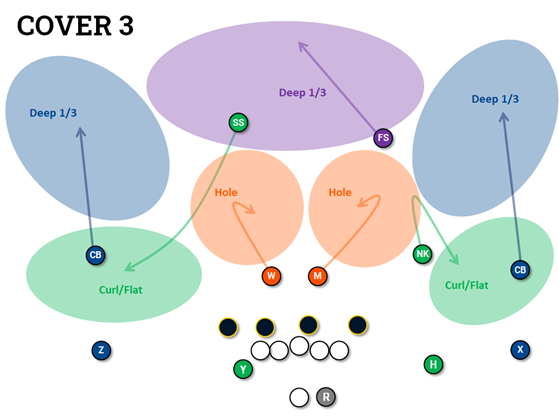
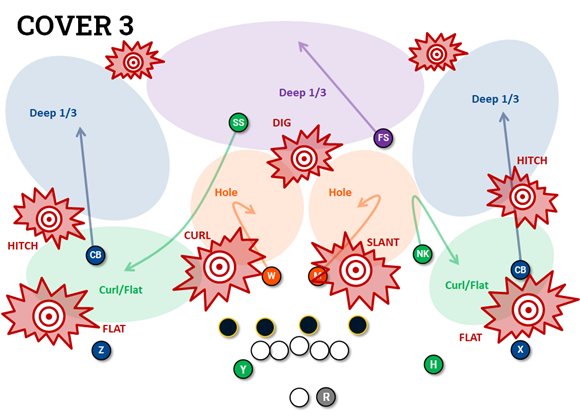
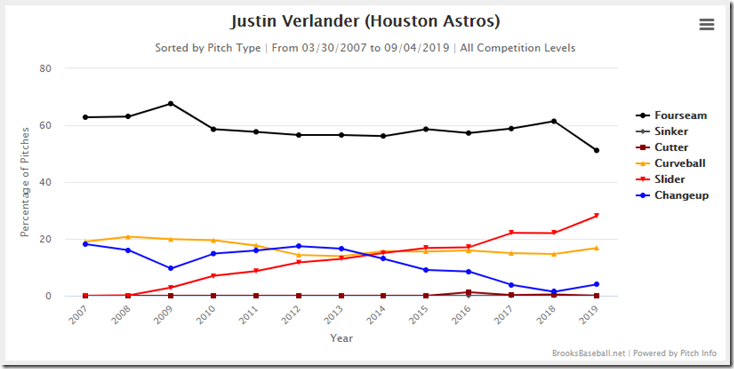
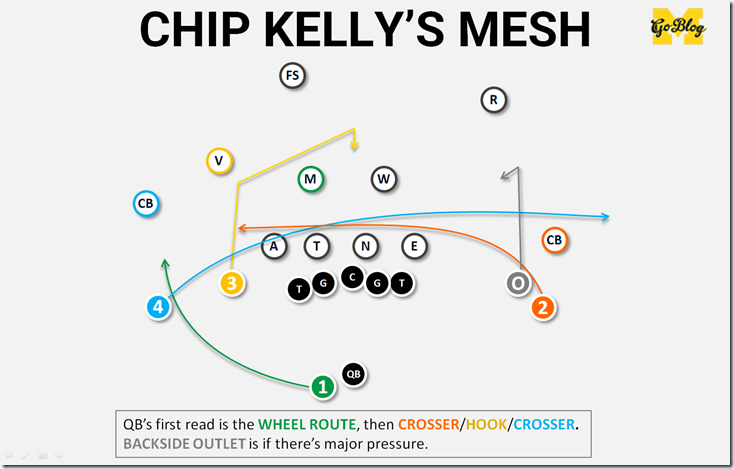
43